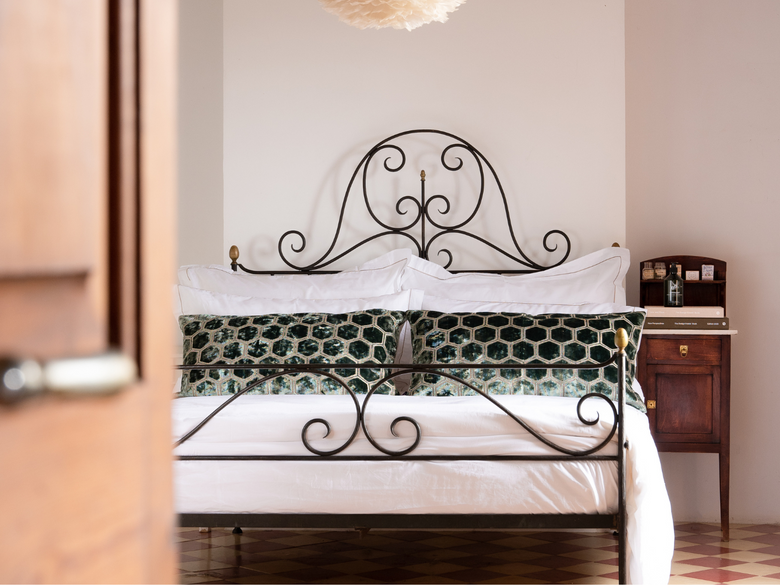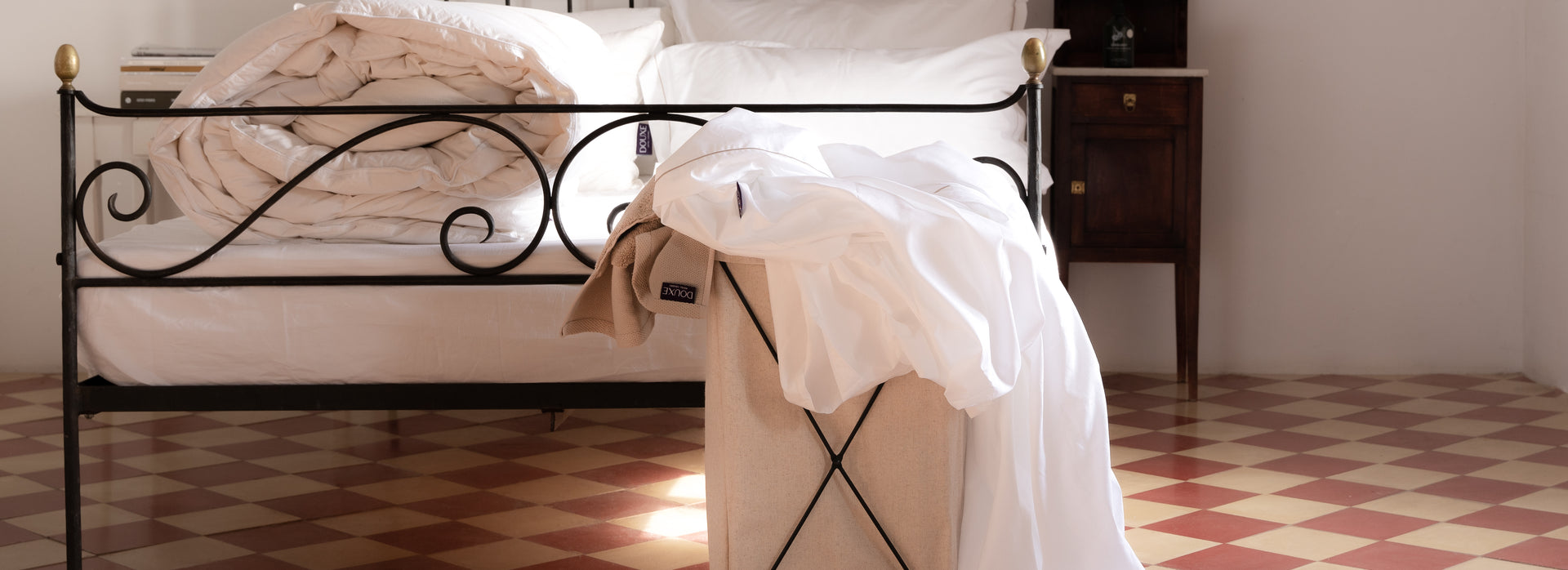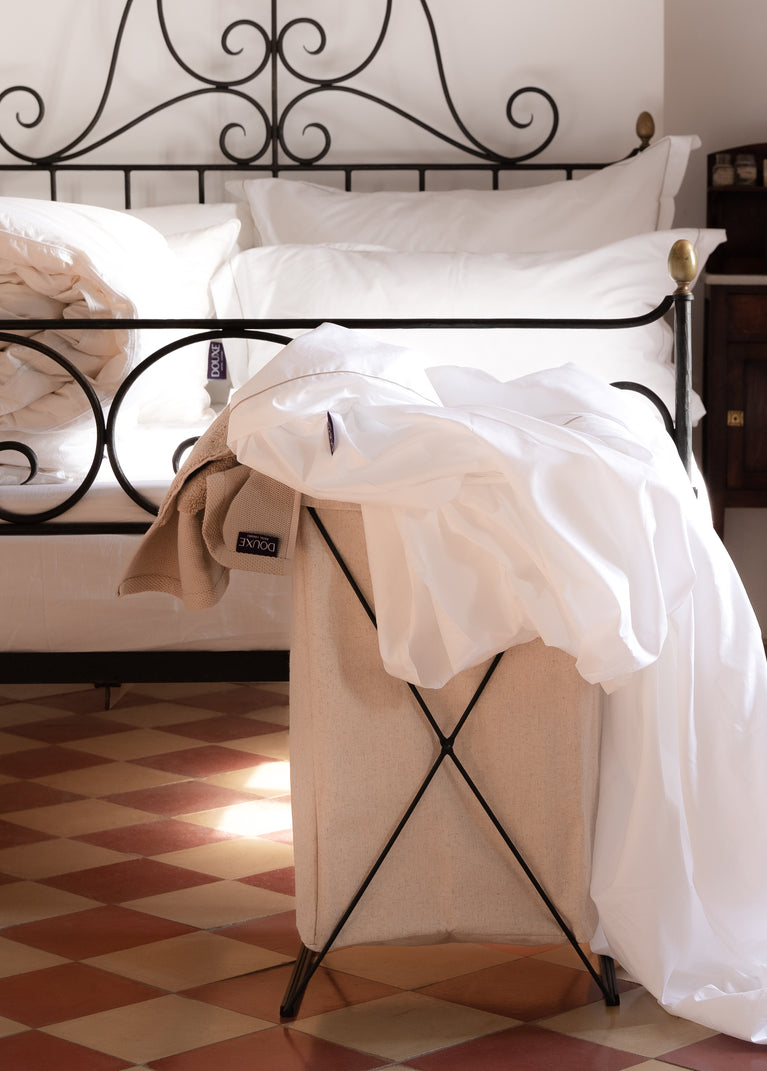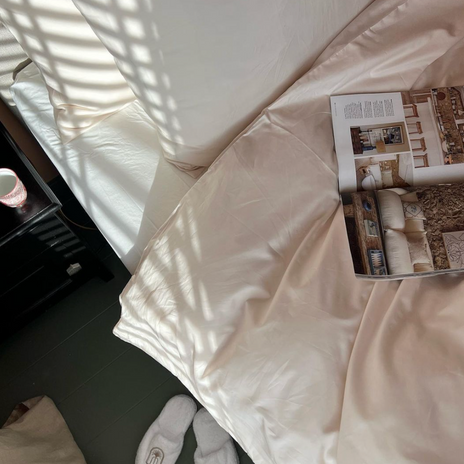Housekeeping tips
To enjoy your products for years, it's essential to maintain them properly and give them a regular wash. But fear not, we've gathered some nifty pointers and clever hacks to make this easier for you! With the right upkeep, you can ensure that your products last longer and provide you with years of sleep bliss.
Although it might require some extra time and effort, this investment is definitely worth it. By applying our tips and tricks, you'll not only sleep comfortably but also save costs in the long run. So make the most out of your products and enjoy a good night's rest!
First use: You only need to attach the legs and/or casters provided. Tighten all legs and/or castors firmly. Please note! Also attach the legs in the middle of the box spring. Tighten them again after the first month. A double bed consists of two box springs that can be attached to each other by means of connectors. A headboard that may be included is attached to the headboard of the bed. Depending on the model chosen, you can attach the headboard to the bed or to the wall.
Care advice: To clean an upholstered box spring, use a soft, damp cloth or a soft brush. Never use abrasives, bleach or other corrosive substances. We recommend that you use as little water as possible.
First use: Please note that mattresses always need some time to "settle in". Initially, your mattress will feel a little stiff. Your body also needs some time to get used to a new mattress. We recommend that you turn and rotate the mattress at least once every quarter. For protection and hygiene, always use a 100% cotton flannel and fitted sheet. Open your comforter every morning to allow the mattress to air properly.
Care advice: If you want to remove a stain, do not use corrosive substances and as little water as possible. It is best to put the mattress on one side. Caution! Never fold the mattress in half, this can damage the springs in the mattress.
First use: Your Featherbed/Fiberbed may not be the right size after unpacking. Therefore, first let it air for four hours. During use, the Featherbed will continue to form to the desired size.
Care advice: Open your comforter every morning so that the Featherbed/Fiberbed can air properly. It is also important to regularly shake the Featherbed/Fiberbed to retain volume and resilience. A Comfort Featherbed is best shaken twice a week. For the Original Featherbed and the Prestige Featherbed, once a week is sufficient. Finally, we recommend that you turn the Featherbed over and around once a week, for example when changing the bed linen.
Washing advice: With daily use, we recommend that you professionally clean the Featherbed/Fiberbed once every four years. The DOUXE Featherbed/Fiberbed can be washed at 40°C but does not fit in a regular washing machine.
Finally: Our ticking is made of cotton so it is breathable and allows the Featherbed to breathe. Despite the tightly woven ticking, an occasional feather can poke through. This is especially common with new Featherbeds. The cause is the friction between the Featherbed and the underlying mattress. This is easily solved by complementing your Featherbed with a protective cover or flannel.
First use: The protective cover is made of durable cotton. Because cotton still shrinks slightly during the first washings, the protective cover is slightly larger than the indicated size. The protective cover is designed for the DOUXE Featherbed and can be used in combination with or instead of a flannel.
Washing advice: We recommend washing the protective cover inside out and with the zipper closed at 40°C (max. 60°C) and drying in the dryer at a low temperature.
First use: Your comforter and/or pillow may not be the right size after unpacking. Therefore, first let it air for a few hours.
Care advice: Open your comforter every morning so that it can air properly. To retain the volume, we recommend that you regularly lightly shake the comforter and/or pillow. Turn and rotate your comforter and/or pillow regularly.
Washing advice: With daily use we recommend that you clean the comforter once every four years. It is best to have the comforter cleaned professionally by your dry cleaner.
First use: Your pillow may not be the right size after unpacking. Therefore, first let it air for a few hours.
Care advice: To retain the volume, we recommend that you regularly lightly shake the pillow. Turn and rotate your pillow regularly.
Washing advice: To protect your pillow and for reasons of hygiene, we recommend that you use a pillow slip. You can wash your pillows yourself at 40°C. Do this annually and use only a wool detergent (alkali-free) and no fabric softener to prevent damage. Attention! After washing, let the pillow dry very well, preferably in a dryer with some new tennis ball.
First use: Wash your new set of bed linen the first time with cold water. Once you have done that, you can switch to (maximum) 60 degrees. The reason? Cotton is more likely to shrink during the first few washes.
Washing advice: Always wash your bedding with the same colours, inside out and do not use fabric softener or other chemical products. That way you ensure that the color is well preserved. Always wash at a low speed and preferably use an anti-crease program.
We recommend that you allow Egyptian cotton duvet covers, fitted sheets and pillowcases (but also all other fabric bedding) to air dry as much as possible. That is the least harmful, and - a nice side effect: Egyptian cotton dries in less than an hour. Small effort to also get that fresh, clean scent in your bedding.
Bed linen from natural materials tend to crease more in the dryer. Especially percal, so that is another reason to recommend hanging out percale and not to dry in the dryer. A little housekeeping tip is to spray the linen with water after making the bed. You can use a simple plant spray and then strike the linen flat to leave it looking chic and tidy.
Prefer the dryer? Absolutely possible, but dry your beloved cottons on a short program and a low temperature. Remove the bedding from the dryer in time, preferably when it is still slightly damp, to reduce the amount of creases.
Last but not least: adding natural dryer balls in the tumble dryer is recommended. Dryer balls shorten the drying time of the laundry and act as an alternative to fabric softeners. In addition, this product ensures better air circulation, which prevents creasing.
Care advise: We recommend you to hang the bedding straight while it is still slightly damp. You will then be spared of the worst creases. And you can go to bed thinking of your small contribution to the environment not using the tumble dryer.
If you choose to iron, remove the bedding from the dryer or from the washing line when it is still slightly damp, fold it twice, then run an iron over it - in setting 1 if slightly damp, setting 2 if the fabric is almost dry. A small effort, but afterwards your bedroom does look like a luxury suite.
Okay, one more tip. In our opinion, one of the largest and most convenient outcomes in bedding care is a handheld steamer. You quickly and effortlessly remove creases from fabrics and affect the fibers of the fabric many times less compared to a (too) hot ironing plate.
And finally bleach... Better not. Bleaching can weaken the natural fibers and make the cotton less absorbent. The products also lose their softness, shine and the color can be affected. Need an alternative? Because of big, deep spots that won't disappear. Then use an alternative to bleach, such as the "All Purpose bleach alternative" from "The Laundress". Or go for natural options such as vinegar and lemon. Leave the treated area dry in the sun and it naturally bleach the fabric turning it back into your heavenly white sheets.
To maintain the longevity and softness of your towels, it is important to care for them properly. We recommend washing your towels at a moderate temperature of 40°C (occasionally up to 60°C). Be aware that certain cleaning and cosmetic products may contain ingredients that can cause bleaching. Therefore, use liquid detergent and avoid fabric softeners. Wash your towels separately from other fabrics and garments to prevent discoloration and damage from zippers and buttons.
Usually, about three washes are needed to fully remove any residual finishes from new towels and to enhance their absorbency. Using a dryer helps maintain the volume and softness of your towels. Dry the towels at a moderate temperature and ensure they are completely dry. This will help your towels stay soft and absorbent for longer.
Note: Carefully trim any loose threads, and do not pull on them to avoid damaging the fabric.
Always wash the bath mat before using it. Then dry it in the dryer to make it wonderfully soft and fluffy, just like new. After a few washes, the bath mat reaches its maximum absorbency. On subsequent washes, shake the bath mat well or pat it outside to remove dust, dirt and hair. Wash the mat at 30-40°C; this is sufficient to remove dirt and bacteria without damaging the bath mat. To avoid damage from hard materials such as zippers or buttons, it is best to wash the bath mat separately or together with towels.

Egyptian cotton does not fluff, pill or roughen and remains silky soft after every wash. In fact, it only gets softer, smoother and more beautiful.
#DouxeHotelLuxury
Share your hotel luxury style using #DouxeHotelLuxury and we'll repost our favourites.






